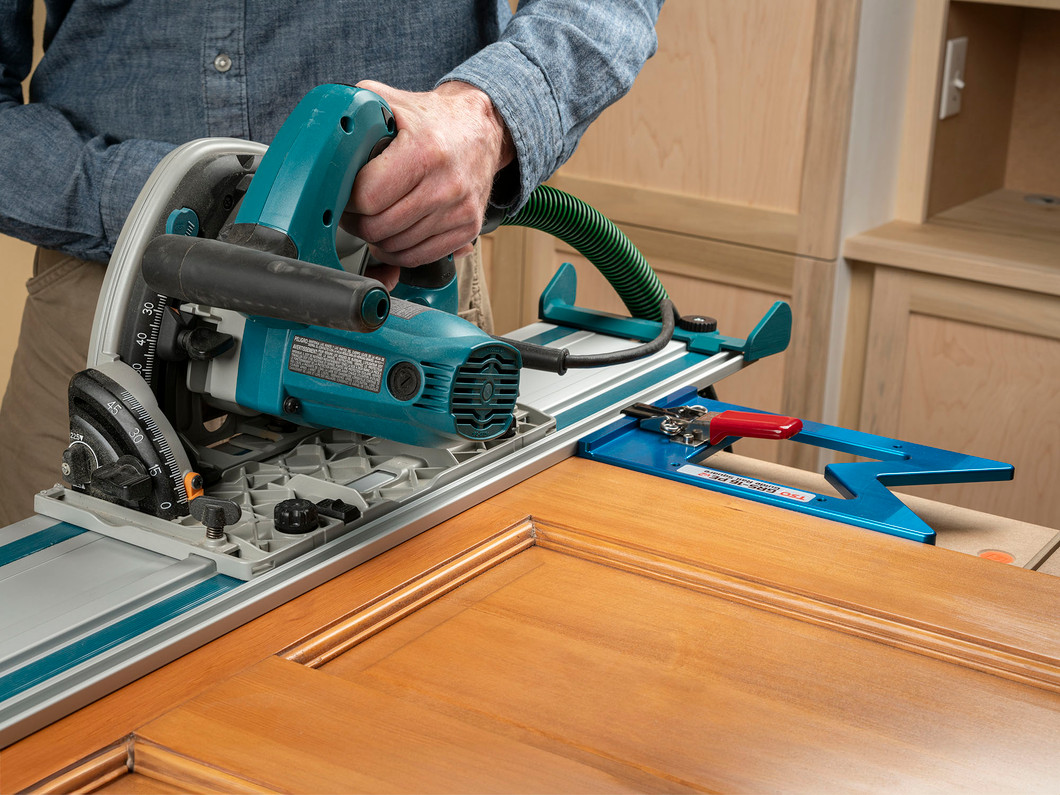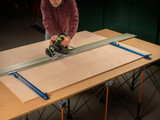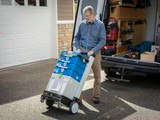Cordless vs Corded Track Saws: Which is Right for Your Shop or Jobsite?
From Festool to Makita, DeWalt, Bosch, Milwaukee, and more, track saws have earned their place in workshops—and for good reason. They deliver the precision of a table saw with the flexibility to handle large panels, sheet goods, and even jobsite work where dragging a portable table saw isn't practical. But as cordless technology continues to improve, many woodworkers face a legitimate choice: stick with the reliable power of a corded model or embrace the freedom of battery-powered cutting.
One factor often overlooked in this debate is dust collection. Professional work, especially in clients' homes, demands effective dust management, and cordless tools typically rely on dust bags that pale in comparison to the suction power of a quality HEPA vacuum. If you're already running a dust collection hose to your track saw, adding one more cord (a much smaller power cord) becomes a minor consideration rather than a mobility limitation.
The decision isn't just about convenience. Your choice affects everything from workflow efficiency to job site logistics and how seamlessly you can move through a project. Let's break down what each option actually delivers in real workshop conditions.
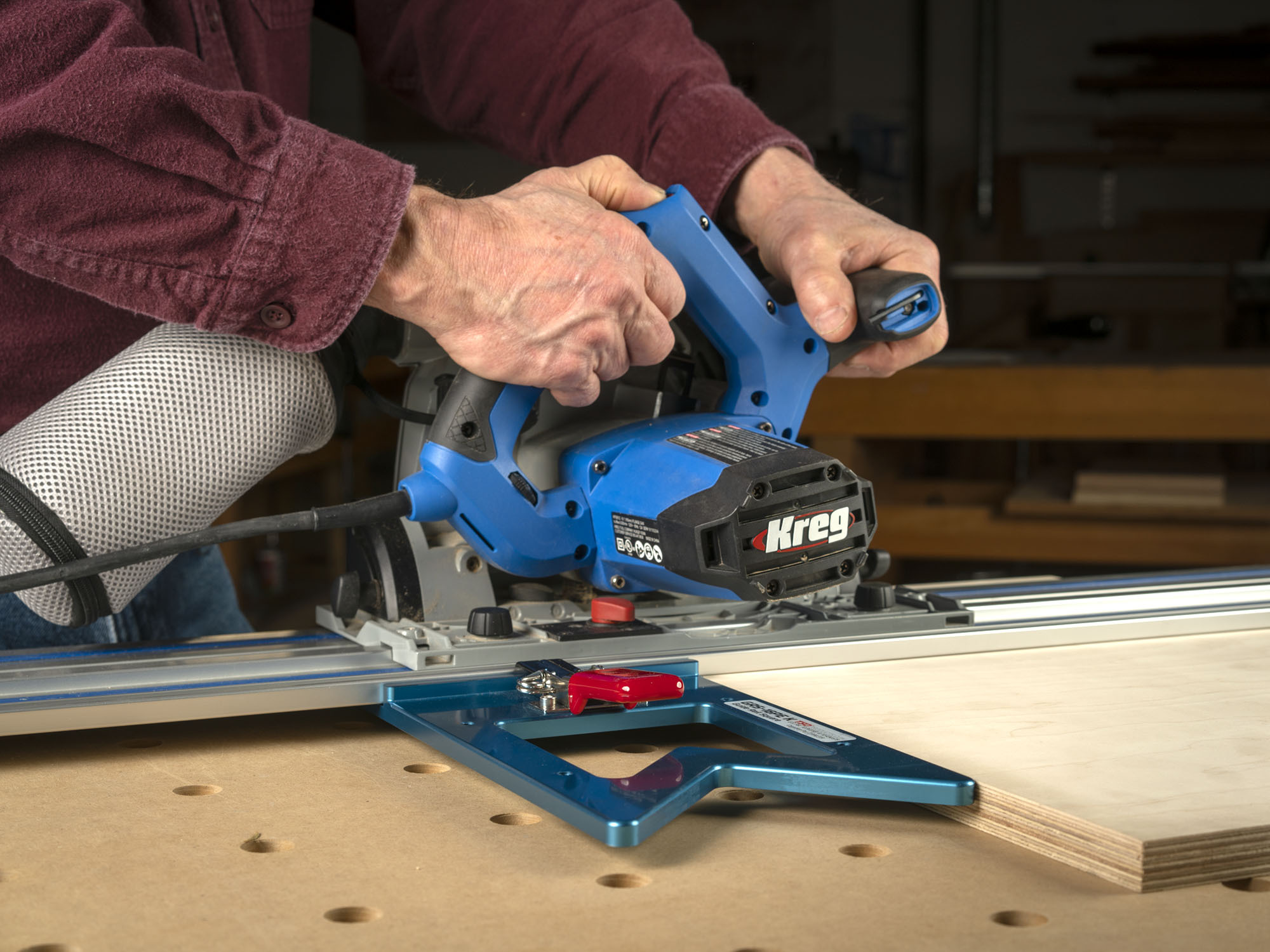 Track Saws: Must-Have for Woodworkers
Track Saws: Must-Have for Woodworkers
Track saws excel where other tools hit their limits. Try breaking down a 4x8 sheet of plywood on a contractor saw, or making a perfectly straight 6-foot rip without a fence that long. Track saws handle these tasks with precision while keeping you safe from awkward, bind-prone cuts.
They're particularly valuable for on-site work—cabinet installations, built-ins, or any situation where you need table saw accuracy without the table saw. The track system eliminates the guesswork and measuring errors that plague circular saw work, while the plunge action and scoring capability minimize tearout on veneered surfaces.
When paired with quality alignment tools like Guide Rail Squares or Parallel Guides, track saws become part of a precision cutting system that rivals stationary equipment for accuracy while maintaining complete portability.
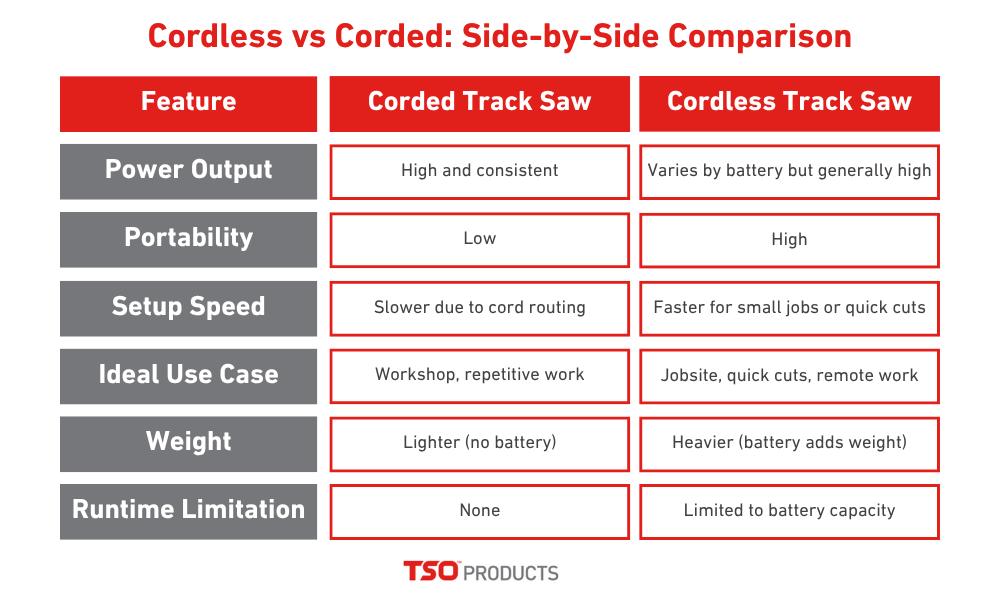
Corded Track Saws — What You're Getting
Strengths
Corded track saws deliver unwavering power from start to finish. When you're ripping through 8/4 maple or spending the day breaking down sheet goods, that consistent amperage matters.
In a dedicated workshop setting, corded models make perfect sense. You're not constantly moving between locations, so the cord becomes less of an issue. Another factor to consider is dust collection. If you’re already running a dust collection hose to your track saw, what’s one more (and much smaller) cord? More importantly, you never face the interruption of a dead battery mid-cut or the workflow disruption of swapping batteries during a critical sequence of cuts.
The reliability extends beyond just power delivery. No charging cycles mean no battery degradation over time, and no concerns about whether your saw will be ready when you need it most.
Limitations
That power cord becomes the enemy when you're working around large panels or in tight spaces. Routing the cord to avoid your cut line while maintaining a comfortable stance can turn a simple cut into an exercise in frustration. Even with careful planning, you'll find yourself repositioning the cord more often than you'd like.
Jobsite work amplifies these challenges. Available outlets are rarely where you need them, extension cords create trip hazards, and outdoor conditions can limit your options entirely. Weather, dust, and the general chaos of construction sites aren't kind to corded tools.
Cordless Track Saws — What They Offer
Strengths
Modern cordless track saws have closed the performance gap significantly. Most modern cordless systems—especially those using 5.0Ah+ batteries—maintain strong performance throughout much of the charge cycle, though power can still taper under prolonged or heavy load, depending on the tool and battery platform.
The freedom factor is real. No cord management means faster setups and cleaner workflows, especially when working around large panels where cord positioning becomes a chess match. On jobsites, you can work anywhere within reason…no outlet hunting, no extension cord management, no weather-related power concerns.
Recent improvements in battery technology have addressed many early concerns. Today's 18V and 20V systems, particularly with 5.0Ah or larger batteries, provide sufficient runtime for most project demands while maintaining consistent power output. In fact, many cordless track saws now provide more power than their corded siblings.
Limitations
Battery life remains the primary constraint. Extended sessions—like breaking down multiple sheets of plywood or making dozens of cuts—may require battery swaps or work stoppages for charging. This interruption can disrupt workflow, particularly during time-sensitive operations.
Weight becomes a factor during extended use. The onboard battery adds 1-2 pounds to the tool, which accumulates over a long day of cutting. Your arms and shoulders will notice the difference.
Dust collection presents another significant limitation for professional work. The dust bags included with cordless track saws are inadequate compared to a quality HEPA vacuum system. For professionals working in clients' homes or any environment where effective dust management is critical, having vacuum dust collection is non-negotiable. However, when attaching a dust collection hose to a cordless tool, much of the moibility advantage of going cordless is largely negated.
Factors to Consider When Choosing
Your typical workspace drives much of this decision. If you're primarily working in a dedicated shop with reliable power, the cord becomes a minor inconvenience rather than a major limitation. But if you're frequently moving between jobsites, doing installations, or working in spaces where outlets are scarce, cordless mobility becomes essential.
Materials matter significantly. Cutting primarily plywood, MDF, and softwoods? Modern cordless saws handle these with ease. But if your typical workday involves thick hardwoods, dense exotics, or heavy production cutting, corded power delivery may be worth the mobility trade-off.
Cut length and frequency also influence the equation. Making occasional crosscuts or breaking down the odd sheet of plywood suits cordless perfectly. However, if you're regularly making long rips or processing high volumes of material, the consistent power and unlimited runtime of corded models become more valuable.
Budget and battery ecosystem considerations extend beyond the saw itself. If you already own tools in a particular battery platform, staying within that system makes financial sense. But if you're starting fresh, factor in the cost of multiple batteries and chargers—cordless setups require more upfront investment for optimal productivity.
Dust collection is also a factor. Are you already running a large hose to your track saw? If so, the portability advantage of a cordless saw might be undermined by the vacuum hose. Thinking about switching from a dust collector to a dust bag? Prepare to be disappointed in how poorly sawdust is evacuated from the tool, and your work environment.
Tool weight and fatigue shouldn't be overlooked, especially during extended use. The extra weight of cordless models may seem minor initially, but it accumulates over a full day of cutting. Consider your typical project duration and physical demands.
Which One's Right for You?
The choice between cordless and corded track saws isn't about finding the "best" option—it's about matching the tool to your specific workflow and environment. Corded models excel in workshop settings where consistent power and unlimited runtime matter most. They're ideal for production work, repetitive cutting, and situations where maximum cutting efficiency is paramount.
Cordless saws shine in mobile applications, jobsite work, and scenarios where setup speed and flexibility outweigh raw power concerns. They're particularly valuable when working in spaces where cord management becomes problematic or when electrical access is limited.
Many experienced woodworkers ultimately keep both options available, selecting the appropriate tool based on the specific demands of each project. A corded saw for shop-based production work and a cordless model for installations and quick jobs represents a practical, if investment-heavy, approach.
Your decision should reflect how and where you actually work, not just theoretical capabilities. Consider your most common cutting scenarios, evaluate your workspace constraints, and choose the option that eliminates the most friction from your typical workflow.
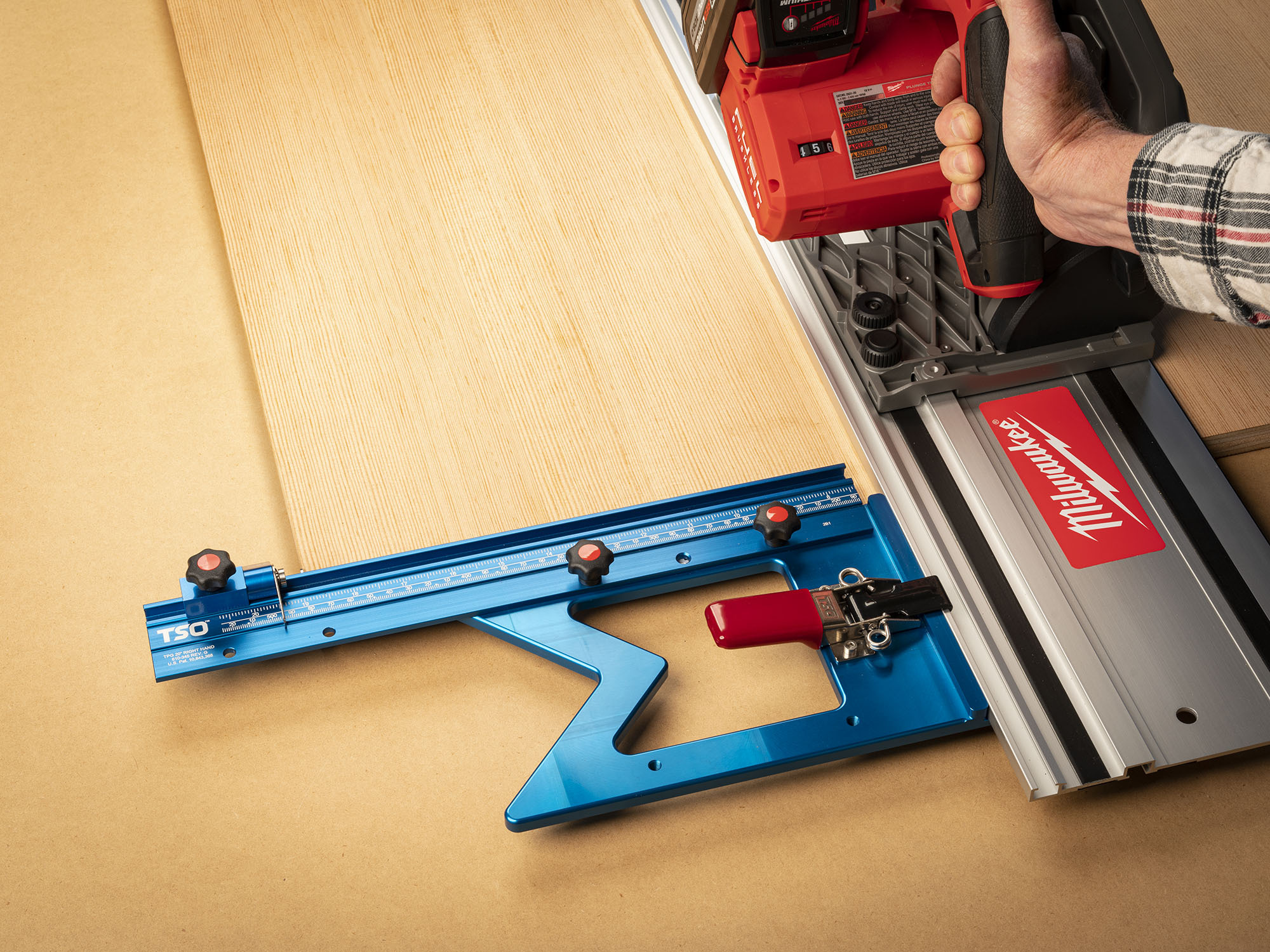 Tools That Complement Your Track Saw
Tools That Complement Your Track Saw
Regardless of which power option you choose, maximizing track saw accuracy often comes down to the supporting tools in your system. Quality Guide Rail Squares ensure perfect 90° and 45° cuts without time-consuming measurements, while Parallel Guides enable consistent rip cuts at any distance from your panel edge.
The key is building a complete cutting system rather than just selecting an individual saw. Precision tools transform a good track saw into a highly accurate cutting station, whether you're working in the shop or on location. When every cut matters, these accessories often make the difference between acceptable results and truly professional outcomes.
Recent Posts
-
What Size Guide Rail Do I Need? Choosing the Right Length (and When to Use Extensions)
The scenario: you need to make a cut in that full size plywood panel sitting in the corner of your s …6th Nov 2025 -
Best Track Saw Systems: Expert Review & Advice
The track saw market has changed considerably over the past three years. Back then, your options wer …6th Nov 2025 -
Systainer Storage Guide: Organize Your Workshop Tools
Picture this: you're setting up for what should be a straightforward series of cuts, but you can't l …2nd Sep 2025

